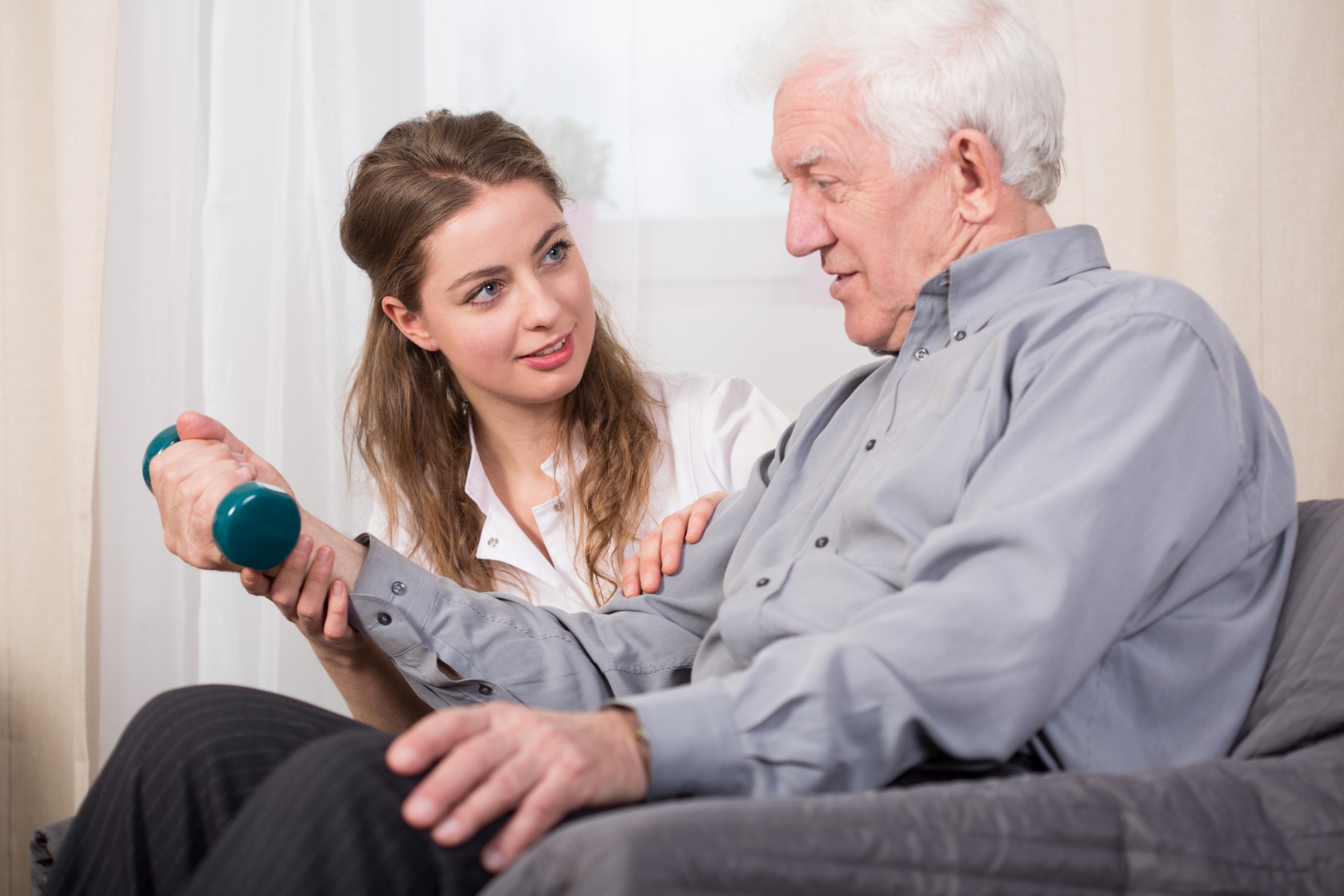All too often, older adults don’t realize their balance is not what it used to be until after they experience a fall. Unfortunately, falls are dangerous; many of them result in significant injury in the short run. Lasting fear of falling can also negatively impact an individual’s quality of life in the long run. Because falls can be prevented w ith a proactive approach to balance training, we have embarked on a comprehensive fall-prevention model.
ith a proactive approach to balance training, we have embarked on a comprehensive fall-prevention model.
While rehabilitation might be a good starting point for residents with severe balance impairments, our fitness center managers take several steps to play an active role in providing balance training long before residents experience a decline in quality of life.
Transitions with Therapy
A referral service can work two ways. For example, when a resident graduates from therapy services, NIFS fitness staff ensure they are continuing with their balance exercises in the fitness center. This helps residents remain independent while enjoying the lasting effects of their achievements from working with physical therapy. Similarly, when our staff members identify a resident who could benefit from working with therapy, they refer that resident to therapy services on campus to create a seamless transition of care. Read this blog to find out more about how our staff supports a positive fitness center–therapy relationship.
Individual Services in the Fitness Center
Residents with less-significant balance issues benefit from working with our staff to receive an individual exercise program that addresses their unique balance needs. In addition, our staff provides assessments of the residents’ balance abilities, which can be used to more appropriately prescribe exercises and to demonstrate noted improvements over time.
Group Fitness Classes
Most communities offer a group exercise program, but many schedules still lack classes that are dedicated to balance training. While many class formats incorporate balance training, we believe it is essential to offer dedicated balance classes to meet residents’ needs.
Unique Programming
Sometimes individual services in the fitness center get buried among all the activity opportunities at a community, and the group fitness classes as a recurrent series of events don’t always command a fresh look from your residents. That’s why we believe that specialty programming is a significant element in a comprehensive fall-prevention strategy for your senior living community. NIFS Balance Challenge is a great example of such programming.
***
The need for effective balance training opportunities for older adults will continue to rise as the large baby boomer population enters retirement. Current residents and prospective residents will appreciate this comprehensive approach in addressing balance issues through therapy services as well as through robust programming options in the fitness center.




 Joint pain is a very common problem, and keeping fit is one of the best ways to find reliable relief. For many of us, limiting activity might seem to make sense when a joint is achy. However, inactivity can make matters worse. In fact, inactivity is a leading cause of joint pain, causing weakness in muscles and bones that can lead to injuries and joint disorders like osteoarthritis.
Joint pain is a very common problem, and keeping fit is one of the best ways to find reliable relief. For many of us, limiting activity might seem to make sense when a joint is achy. However, inactivity can make matters worse. In fact, inactivity is a leading cause of joint pain, causing weakness in muscles and bones that can lead to injuries and joint disorders like osteoarthritis.